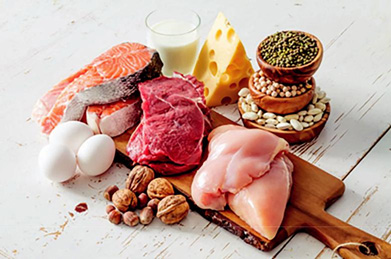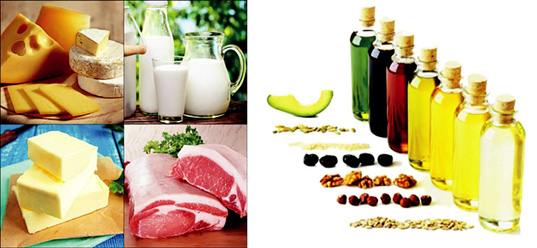
Nutrition plays an important role in the treatment of diabetes along with insulin and self-control. Dietary recommendations for people with diabetes have varied very times. Interestingly, carbohydrate-rich foods have been offered for the treatment of diabetes for months, as it was thought to supplement the glucose that the body lost through urination. Then, on the contrary, the main cause of diabetes was considered to be carbohydrate intake, and sugar-containing products were generally taken from the diet. However, these are already outdated methods and today thanks to the introduction of insulin in the treatment of diabetes, it has become possible to get food similar to the diet of a healthy person. Therefore, children with diabetes can eat almost anything if they know the amount of carbohydrates in the products. In general, any person should consider the diet model of people with diabetes if they want to live a healthy lifestyle and maintain physical and spiritual vigor for a long time. The basic principles of nutrition are as follows: The diet should be physiologically balanced, with an age-appropriate ratio of proteins, fats and carbohydrates; Total caloric intake should be adequate for the age of the child; Food should meet the body's need for vitamins, minerals and biologically active substances; It is necessary to maintain a normal growth rate and weight, to ensure the intellectual development of the child; Meals should be three times: breakfast, lunch, dinner and snacks in the form of fruits, vegetables (without bread); The type and amount of carbohydrates should be selected so as to avoid sharp fluctuations in glucose; . It is necessary to eat regularly and follow a strict diet, because it is difficult to manage glycemia during a disordered diet. If feeding is delayed after injection, blood sugar levels may drop sharply and hypoglycemia may develop; The child should be able to calculate the amount of food received according to the system of bread units (discussed below); Must know how to replace different types of equivalent products in order to be able to eat freely outside the home; If possible, it is necessary to adjust the food to the child's food and not to prepare a separate dish for him; The diet of children with diabetes aims at a ratio close to the norm of proteins, fats and carbohydrates: Carbohydrates - 50-60%; Proteins - 15-20%; Fats - 25-30%; Proteins Nutrition plays an important role in the treatment of diabetes along with insulin and self-control. Dietary recommendations for people with diabetes have varied very times. Interestingly, carbohydrate-rich foods have been offered for the treatment of diabetes for months, as it was thought to supplement the glucose that the body lost through urination. Then, on the contrary, the main cause of diabetes was considered to be carbohydrate intake, and sugar-containing products were generally taken from the diet. However, these are already outdated methods and today thanks to the introduction of insulin in the treatment of diabetes, it has become possible to get food similar to the diet of a healthy person. Therefore, children with diabetes can eat almost anything if they know the amount of carbohydrates in the products. In general, any person should consider the diet model of people with diabetes if they want to live a healthy lifestyle and maintain physical and spiritual vigor for a long time.
The basic principles of nutrition are as follows:
The diet should be physiologically balanced, with an age-appropriate ratio of proteins, fats and carbohydrates;
Total caloric intake should be adequate for the age of the child;
Food should meet the body's need for vitamins, minerals and biologically active substances;
It is necessary to maintain a normal growth rate and weight, to ensure the intellectual development of the child;
Meals should be three times: breakfast, lunch, dinner and snacks in the form of fruits, vegetables (without bread);
The type and amount of carbohydrates should be selected so as to avoid sharp fluctuations in glucose;
It is necessary to take food regularly and follow a strict diet, because it is difficult to manage glycemia during a disordered diet. If feeding is delayed after injection, blood sugar levels may drop sharply and hypoglycemia may develop;
The child should be able to calculate the amount of food received according to the system of bread units (discussed below);
Must know how to replace different types of equivalent products to be able to eat freely outside the home;
If possible, it is necessary to adjust the food to the child's food and not to prepare a separate dish for him;
The diet of children with diabetes aims at a ratio close to the norm of proteins, fats and carbohydrates:
Carbohydrates - 50-60%;
Proteins - 15-20%;
Fats - 25-30%;
Proteins
Protein - participates in all processes in the body. It is the building block of cells, the basis of bone and muscle mass, provides the body with immunity. That is why it is necessary for the child to get a sufficient amount of protein in the form of the following products: animal proteins (meat, fish, seafood, eggs, milk and dairy products), vegetable proteins (peas, beans, walnuts, mushrooms).

Protein-rich foods
Fats
Fat is needed for normal digestion of food, acts as a major source of energy in the body, participates in the absorption of vitamins and minerals. Fats are found in both animal and plant cells. Animal fats include: butter, pork fat, mayonnaise, dairy and meat products. Vegetables - walnuts, sunflower, corn, olives, coconut and their oils.
Fats in the diet of children with diabetes should not account for more than 30-35% of the total caloric content of food. It is undesirable to eat fatty foods such as french fries, chips, hamburgers, it is necessary to avoid fried foods. It is advisable to eat low-fat or skim milk in the diet of adults, but in children under 5 it is not allowed, because it contains low content of vitamin A, very little fat and therefore low in calories.
75% of the daily dose of fats should be represented by vegetable fats.

Animal and vegetable fats
Carbohydrates
Carbohydrates have a special place in baby food (as well as in adults) because they are the main source of energy in the body in the form of glucose, which is essential for the functioning of all cells, tissues and organs, especially the brain, heart and muscles. Carbohydrate-rich products contain large amounts of vitamins and minerals needed for a child’s physical and mental development.
Glucose is absorbed into the bloodstream, where it is broken down and converted into energy. It is at the rate of absorption in the blood that carbohydrates are divided into simple and complex carbohydrates.
easy
(Or fast) Carbohydrates are easily broken down in the body, absorbed quickly,
Causing a rapid rise in blood sugar levels. These are: Monosaccharides
And disaccharides.
Monosaccharides are:
Grape Sugar - Glucose (grapes - its intake can only be limited
In quantity);
Fruit sugar - fructose (a type of sugar found mainly in fruits,
In vegetables and honey). Once in the body, fructose is converted into glucose. him
Contains large amounts of persimmons and figs, which makes them undesirable to take!
Disaccharides are:
Ordinary sugar - sucrose (sugary drinks and foods). Their
Can be used only during hypoglycemia, as they cause a rapid rise in blood sugar.
Milk sugar - lactose (included in all dairy products except cottage cheese and cheese).
Therefore, it is necessary to take into account the amount of such sugar when taking them.
Malt sugar - maltose (barley).

Simple (or fast) carbohydrates.
List of products and foods that contain simple or fast carbohydrates: sugar and sugar-containing products (ice cream, jams, jams); honey; Products made from white bread and white flour (cakes, toast, biscuits, cookies); Sweet, carbonated drinks; Alcohol, beer; "Fast food" and others. It is the intake of "fast" carbohydrate products that is limited in diabetes.
Complex carbohydrates, or as they are called, "slow" carbohydrates, are made up of more than two molecules, so
Before the body can absorb them, they are first broken down into simple carbohydrates and slowly absorbed.
In the blood and therefore does not cause a rapid rise in blood sugar levels. They contain
Legumes (beans, peas); Vegetables, herbs, berries, fruits, coarsely ground wheat,
Cereals (oats, barley, buckwheat, wild rice), made from solid wheat
Pasta products.

Complex (or slow) carbohydrates
There are complex carbohydrates that are not absorbed by the body. Such is the cell that forms the basis of plants. It controls many processes in the body: primarily promotes the digestion of products so as not to cause an increase in blood sugar; Cleanses the intestines; Lowers blood cholesterol levels; Plays an important role in the normalization of the intestinal microflora.

Cell-rich foods.
The largest amount of cells is found in live vegetables, fruits, grains and legumes. Green beans, grapefruit, lemon, strawberries and black currants, as well as oats, rye and wheat contain plenty of cellulite. You probably remember that morning oatmeal is considered to be the best start to the day.
Definitely worth noting is the fact that the cell is not found in meat, dairy products and animal foods in general. Cereals are mainly cleaned from the cell during processing. That is why we need to enrich food:
Legumes (lentils, beans, peas);
With vegetables;
With fruit;
Nuts;
With brown rice;
With whole grains (wheat, oats, barley);
In order to properly plan and select the desired menu, we need to consider only those products that cause a rise in blood sugar. A large selection of carbohydrate foods makes it possible to create a healthy and varied menu.
There are currently methods that can help us eat rationally and deliciously. these are:
Method of calculating bread units;
Glycemic index method;
Method of interchangeable products;
Plate method;
Hand method;
Food pyramid;






